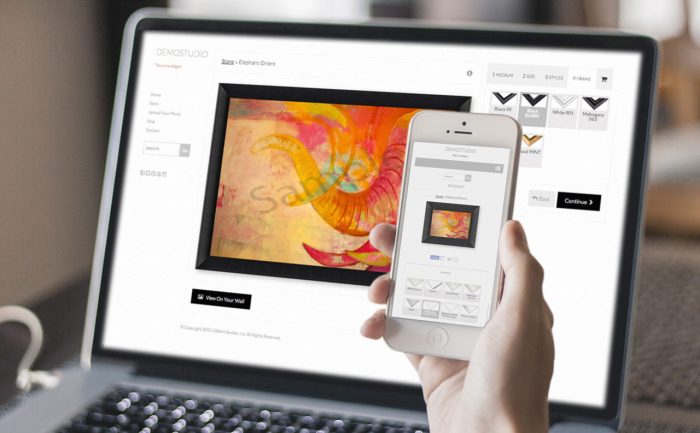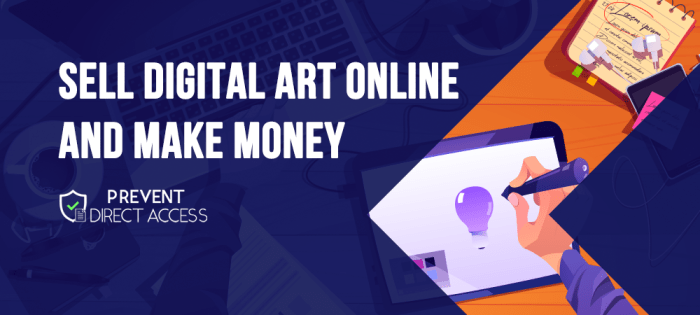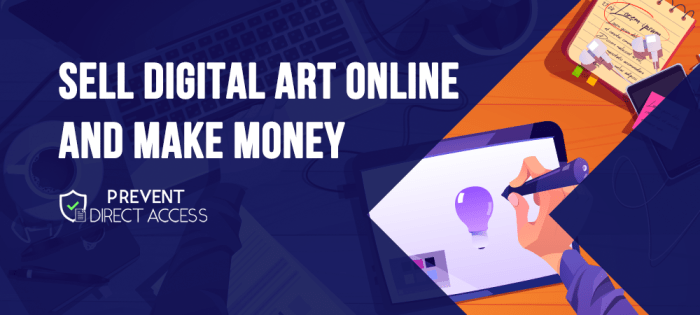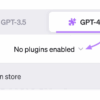How to sell digital art and graphics online is a comprehensive guide to navigating the world of digital art sales. This in-depth exploration covers everything from choosing the right platforms to crafting a compelling online presence, and essential marketing strategies for maximizing your reach.
From establishing a professional online portfolio to understanding copyright and pricing strategies, this guide equips artists with the tools and knowledge needed to succeed in the digital marketplace. Learn how to connect with buyers, build a loyal customer base, and create a profitable online business.
Platforms for Selling Digital Art
Selling digital art online has become a popular avenue for artists to reach a global audience and monetize their creations. Choosing the right platform is crucial, as it impacts visibility, earnings, and the overall artist experience. This section explores the most popular online marketplaces for digital art, highlighting their features, benefits, and drawbacks.The digital art market is dynamic and competitive.
Different platforms cater to diverse needs and preferences, from established artists seeking high volume sales to emerging creators looking for a broader reach. Understanding the nuances of each platform can help artists make informed decisions that align with their artistic goals and business strategies.
Popular Online Marketplaces for Digital Art
Numerous online marketplaces offer platforms for artists to showcase and sell their digital art. Key platforms include Etsy, Society6, Creative Market, Redbubble, and more niche sites. Each platform has unique features and caters to different artistic styles and target audiences.
- Etsy: A versatile platform known for its broad reach, Etsy allows artists to sell a wide range of digital products, including prints, stickers, and digital downloads. Etsy’s established user base and robust search engine often translate into higher visibility and sales opportunities for artists.
- Society6: Specializing in wall art and home decor, Society6 offers artists the chance to create and sell designs on a wide variety of products. This platform often generates a steady stream of sales for artists, particularly those focused on prints and wall art.
- Creative Market: Primarily a marketplace for digital assets like fonts, graphics, and templates, Creative Market has a dedicated user base seeking high-quality digital assets. Artists focusing on digital products such as stock images, illustrations, or templates can find a receptive audience here.
- Redbubble: Redbubble is a popular platform for artists seeking a broad range of product options. Artists can sell their designs on apparel, phone cases, and other merchandise, leading to diverse revenue streams.
Features and Benefits of Each Platform
Each platform offers a unique set of features and benefits. Some platforms specialize in particular artistic niches, while others cater to a broader range of styles. A deep understanding of these features is critical for artists to maximize their platform usage.
- Etsy offers robust customization options, including the ability to list items with detailed descriptions and high-quality images. This platform emphasizes a handcrafted aesthetic, making it ideal for artists who want to present their work as unique creations.
- Society6 provides a curated marketplace with a focus on high-quality designs. Artists often benefit from a more aesthetic and organized environment for showcasing their work. This could translate to higher visibility and a more focused audience.
- Creative Market is well-suited for artists who sell digital products. The platform’s infrastructure is specifically designed to support digital asset sales, offering features that are tailored for digital art transactions.
- Redbubble provides a wide range of product options. This broad selection of products can lead to diverse revenue streams and reach a wider audience.
Commission Rates and Payment Processing
Commission rates and payment processing methods vary significantly across different platforms. Artists should carefully compare these factors before choosing a platform.
| Platform | Pros | Cons | User Reviews |
|---|---|---|---|
| Etsy | Broad reach, customization options, established user base. | High commission rates, potentially complex listing procedures. | Generally positive, but some users report challenges with customer service. |
| Society6 | Curated marketplace, high-quality designs. | Limited product options compared to Redbubble, relatively low commission rate, potential competition. | Mixed reviews; some artists find the platform highly profitable, others feel constrained by the limited options. |
| Creative Market | Dedicated audience for digital assets, high commission rates, focus on digital assets. | Limited physical product options, can be competitive. | Positive reviews, highlighting ease of use and streamlined sales process for digital products. |
| Redbubble | Wide range of product options, potential for higher sales volumes. | High commission rates, can be highly competitive. | Generally positive, highlighting the diverse revenue streams and reach, but some artists report challenges with customer service. |
Pricing Strategies for Digital Art
Setting the right price for your digital art is crucial for attracting buyers and ensuring profitability. A well-considered pricing strategy not only reflects the value of your artwork but also positions you as a professional artist in the digital marketplace. Understanding various pricing models and tailoring your approach to your specific art style, complexity, and target audience are key components of success.Pricing your digital art isn’t just about slapping a number on it; it’s about strategic thinking and understanding your market.
A thoughtful approach allows you to build a sustainable business model, attract the right buyers, and maximize your earnings. This involves a multifaceted consideration of your art’s unique qualities, the time and effort invested, and the prevailing market trends.
Different Pricing Models
Different pricing models cater to various artistic styles and target audiences. Understanding these models is essential for effective pricing strategies.
- Fixed Pricing: This model sets a specific price for each piece, regardless of size, complexity, or demand. It’s straightforward for artists who prefer consistency. Fixed pricing is commonly used for prints, stock photos, and digital products with a predetermined set of features.
- Tiered Pricing: This approach offers different price points for various sizes, qualities, or features of a product. For example, a digital painting might have different prices for a small print, a medium print, and a large print, or a graphic design service might offer different packages with varying levels of customization.
- Commission-Based Pricing: This model allows buyers to commission custom pieces. The price depends on factors like the complexity of the artwork, the time required, and the desired outcome. It allows for more flexibility and allows artists to focus on specific requests from buyers.
- Value-Based Pricing: This model is often used for unique and highly sought-after digital art. The price is determined by the perceived value of the artwork to the buyer, considering factors like the artist’s reputation, the artwork’s originality, and its aesthetic appeal. This is a suitable strategy for artists who are recognized for their distinctive style and unique approach.
Pricing Based on Art Style, Complexity, and Demand
The style, complexity, and demand for your artwork directly influence your pricing strategy.
- Art Style: Highly stylized or abstract art might command different prices compared to realistic or photorealistic pieces. Consider your target audience’s preferences and the perceived value of your style. For instance, highly detailed photorealistic paintings might command higher prices than simplified graphic designs.
- Complexity: More intricate and detailed artworks typically warrant higher prices. Consider the time, effort, and resources required to create the piece. A detailed digital painting with numerous layers of detail will usually command a higher price than a simpler graphic design.
- Demand: High demand for a particular style or subject matter can justify higher prices. Analyzing your audience and understanding the market’s interest is vital. If a certain style is in high demand, it might be appropriate to price it accordingly, while less popular styles might need a lower price to attract buyers.
Calculating Profitable Pricing
Calculating profitable pricing requires careful consideration of production costs and target audience.
- Production Costs: Include the cost of materials (if any), software, and the artist’s time. For example, software licenses, the artist’s hourly rate, and the cost of hardware can be incorporated.
- Target Audience: Understanding your target audience’s willingness to pay is essential. Research competitors’ pricing strategies and analyze the pricing of similar artwork to determine a fair and competitive price.
- Profit Margin: Establish a desired profit margin to ensure the sustainability of your business. Determine how much profit you need to make per piece or sale to maintain your income goals.
Pricing Model Comparison
A table illustrating different pricing models and their pros and cons.
| Pricing Model | Description | Advantages | Disadvantages |
|---|---|---|---|
| Fixed Pricing | A set price for each piece. | Simplicity, Predictability. | May not reflect value, limits flexibility. |
| Tiered Pricing | Different price points for varying sizes or features. | Value for money, accommodates different needs. | Can be complex to manage. |
| Commission-Based Pricing | Custom pieces priced based on complexity. | Flexibility, high potential value. | Requires more time, uncertainty in pricing. |
| Value-Based Pricing | Pricing based on perceived value. | Potential for high returns, reflects uniqueness. | Difficult to determine value, susceptible to market fluctuations. |
Creating a Professional Online Presence
A strong online presence is crucial for digital artists seeking to establish credibility and attract clients. A well-designed website or portfolio serves as a dynamic storefront, showcasing your unique artistic style and skills. It’s more than just a collection of images; it’s a curated experience that tells your story and builds trust with potential buyers.A professional online presence allows you to control your narrative, showcase your work in the best light, and interact with potential clients.
This visibility significantly enhances your opportunities to sell your digital art and graphics, fostering a dedicated following and driving sales.
Selling digital art and graphics online can be a rewarding venture, but understanding your audience and how to effectively market your work is key. Knowing how to use the right tools to reach your ideal customers is crucial. For instance, choosing the best digital marketing software, like deciding between Pendo and Userpilot, pendo vs userpilot which digital marketing software reigns supreme , can significantly impact your sales.
Ultimately, a well-rounded strategy is essential for any artist looking to succeed in the online marketplace.
Importance of a Professional Website/Portfolio
A dedicated website or portfolio is essential for showcasing your digital art in a professional manner. It provides a centralized hub for your work, allowing potential clients to explore your style, skillset, and creative vision. This curated collection of your best pieces provides an immediate understanding of your capabilities and artistic direction.
Steps to Create a Website/Portfolio
Building a website or portfolio involves several key steps. First, choose a platform that best suits your needs and budget. Options range from user-friendly website builders to more complex, customizable platforms. Next, meticulously curate your portfolio, ensuring high-quality images and clear descriptions for each piece. Finally, optimize your site for search engines to improve visibility and accessibility.
High-Quality Images and Descriptions
High-quality images are paramount for showcasing your digital art. Use professional-grade cameras or high-resolution scans to ensure your artwork is presented in its best possible light. Clear and concise descriptions are also essential. Provide details about the artwork’s dimensions, style, and any unique features. Include s that potential clients might use in their searches.
This attention to detail creates a strong first impression and fosters trust.
Examples of Effective Online Portfolios
Several digital artists have successfully established strong online presences. A compelling portfolio often incorporates a cohesive design aesthetic, clear navigation, and high-resolution images of the artwork. Effective portfolios typically feature a clear call to action, such as a contact form or an online shop. Consider portfolios that feature interactive elements, like animations or videos, to engage viewers and highlight unique aspects of the artist’s work.
Selling digital art and graphics online can be super rewarding! A great way to gauge your audience’s preferences is by creating a survey in WordPress. This helps you understand what your potential customers are looking for, which is crucial for crafting a successful online sales strategy. Knowing what your customers want can help you target your marketing efforts better, like creating a survey to find out their favorite styles or the ideal pricing points.
Check out this helpful guide on how to create a survey in WordPress to learn the ins and outs of creating one for your website. This feedback will ultimately help you refine your digital art and graphics offerings and increase your sales.
Basic HTML Structure for a Digital Art Portfolio Page
A well-structured HTML page is essential for a professional portfolio. It should be clean, easy to navigate, and visually appealing. The following structure provides a template for a basic portfolio page:
Example portfolio page structure.
“`html
/* Basic styling for the page – / body font-family: sans-serif; .artwork width: 300px; height: 300px; overflow: hidden; /* Prevent images from overflowing the container – / .artwork img width: 100%; height: 100%; object-fit: cover; /* Maintain aspect ratio while filling the container – /


Contact me at [email protected]
“`This structure showcases a simple layout with images and a contact link. Further customization can enhance the visual appeal and functionality of the portfolio. Remember to replace placeholders like “artwork1.jpg” with the actual image file names. You can add more artworks, descriptions, and navigation elements as needed.
Marketing and Promotion Strategies
Selling digital art online requires more than just creating stunning pieces. Effective marketing and promotion strategies are crucial for reaching potential buyers and building a successful online presence. A well-defined strategy will help you connect with your target audience, showcase your unique style, and ultimately drive sales. Consistent effort and adaptation are key to long-term success in this competitive market.A comprehensive marketing strategy should focus on building a strong online presence, engaging with potential buyers on social media, and leveraging different promotional channels.
It involves understanding your target audience, crafting compelling content, and tracking your results to optimize your approach. This allows you to understand what works and what doesn’t, and adjust your strategy accordingly for better returns.
Effective Marketing Strategies for Promoting Digital Art, How to sell digital art and graphics online
A crucial aspect of selling digital art online is understanding your target audience and tailoring your marketing efforts to resonate with them. Knowing their preferences, interests, and online behaviors is essential for crafting effective campaigns. Researching your target audience can provide insights into their demographics, online habits, and preferred social media platforms. This information can be invaluable for optimizing your marketing approach.
Methods for Reaching Target Audiences on Social Media
Social media platforms offer powerful tools for reaching target audiences. Effective strategies involve creating engaging content that captivates your followers. This includes high-quality images and videos showcasing your art, informative captions that describe the piece, and consistent posting schedules. Engaging with comments and messages demonstrates that you value your audience and fosters a sense of community.
Examples of Successful Social Media Campaigns
Successful social media campaigns often leverage a combination of strategies, including contests, collaborations, and targeted advertising. Artists who have achieved success through social media often run contests to generate excitement and engagement, which can drive sales. Collaborations with other artists or influencers can expand your reach and introduce your art to new audiences. Targeted advertising allows you to reach specific demographics interested in your art style.
Creating Engaging Social Media Posts for Artists
Captivating social media posts for artists go beyond just showcasing the art. They should tell a story. Consider using a narrative approach to convey the emotions, inspiration, or process behind the artwork. Adding relevant hashtags and engaging questions to your posts can increase visibility and interaction with your audience.
Table of Social Media Platforms and Promotion Tips
| Platform | Promotion Tips | Example Post |
|---|---|---|
| Use high-quality images and videos. Utilize relevant hashtags and Instagram Stories for behind-the-scenes content. Engage with other artists and followers. | A captivating image of a digital painting. Caption: “New digital painting inspired by the vibrant colors of the sunset. #digitalart #painting #sunsetart #newartwork” | |
| Use concise and compelling tweets to highlight your art. Share links to your online portfolio and use relevant hashtags. Participate in relevant conversations and engage with other artists. | A short video showcasing the creation process of a digital illustration. Tweet: “Watch me bring this digital illustration to life! #digitalillustration #artprocess #illustrationart” | |
| Create a dedicated Facebook page for your art. Share updates on new releases, behind-the-scenes content, and engaging questions. Run targeted ads to reach your ideal audience. | A high-resolution image of a digital graphic design with a caption: “New graphic design ready for print! What do you think of this design? #graphicdesign #digitaldesign #newartwork #printdesign” | |
| TikTok | Use short-form videos to showcase your art process, create tutorials, or highlight specific details of your artwork. Collaborate with other creators and use trending sounds. | A time-lapse video of a digital painting being created. TikTok caption: “Watch this digital painting come to life! #digitalpainting #artprocess #timelapseart #creativeprocess” |
| Create visually appealing boards showcasing your digital art, categorized by style, subject matter, or color scheme. Use high-quality images and engaging descriptions. Repin other artists’ work to stay involved in the community. | A stunning image of a digital illustration with a detailed description on a Pinterest board. Caption: “Check out this collection of vibrant digital illustrations. #digitalart #illustration #colorart #creativeart” |
Legal and Copyright Considerations: How To Sell Digital Art And Graphics Online

Protecting your digital art online requires understanding copyright and intellectual property laws. Ignoring these crucial aspects can lead to significant legal issues and financial losses. This section dives into the essential legal considerations for artists selling their work online.Copyright and intellectual property law are fundamental to protecting your creative work. Digital art, like any other creative work, is protected by copyright from the moment it’s created and fixed in a tangible form.
This protection grants you exclusive rights to reproduce, distribute, display, and create derivative works based on your art.
Copyright Protection Options for Digital Art
Copyright protection is automatic in most jurisdictions, meaning you don’t need to register your work with a specific agency to have legal rights. However, registration can strengthen your legal position if a dispute arises. Registration offers the ability to collect statutory damages in court. Digital art can be protected in the same manner as traditional art, with the digital format not changing the fundamental protections.
Legal Implications of Using Others’ Work
Using copyrighted material without permission is a serious violation. This includes copying, modifying, or distributing others’ work without proper licensing or attribution. Always obtain explicit permission or license to use another artist’s work in your creations, even for inspiration. This includes using stock images or other materials that may not be publicly available.
Legal Agreements for Licensing and Selling Digital Art
Contracts are essential for licensing and selling digital art. Clearly define the terms of use, including the type of license granted (e.g., royalty-free, one-time use, exclusive), the duration of the license, and any restrictions on how the art can be used. Using templates or working with a legal professional to draft contracts ensures all parties are protected.
Selling digital art and graphics online can be a rewarding journey, but a key aspect is attracting the right audience. Using platforms like Twitter and YouTube, you can effectively reach potential buyers with eye-catching visual aids. Consider utilizing “twitter and youtube cards” twitter and youtube cards to improve your visibility and make your art stand out.
These cards can help draw more attention to your online presence, which ultimately helps boost sales.
Common Copyright Issues for Digital Artists and Solutions
| Issue | Description | Solution |
|---|---|---|
| Unauthorized Copying | Digital art is copied and distributed without permission. | Develop strong watermarking techniques. Use digital signatures and copyright notices in your work. |
| Misrepresentation of Ownership | Your work is falsely attributed to another artist. | Clearly state your copyright in all your art files. Use digital signatures and metadata. |
| Copyright Infringement | Your work is used in ways that violate your copyright. | Obtain clear licensing agreements for all uses of your work. Be diligent in monitoring online platforms. |
| Derivative Works | Someone creates a derivative work based on your art without permission. | Clearly define permissible uses in your licensing agreements. Use robust contracts to protect your work. |
| Attribution Issues | Credit for your work isn’t given properly. | Include clear attribution statements on your artwork and website. Use appropriate tags for social media and online platforms. |
Customer Service and Communication

Building strong customer relationships is crucial for the success of any online art business. Excellent customer service goes beyond simply fulfilling orders; it involves proactively engaging with your buyers, addressing concerns promptly, and fostering a positive experience that encourages repeat purchases and referrals. A satisfied customer is more likely to become a loyal advocate for your art and brand.Effective communication is the cornerstone of this positive customer experience.
Clear, concise, and timely communication throughout the entire process, from initial inquiries to order fulfillment and beyond, builds trust and ensures a smooth transaction. This section will delve into the importance of exceptional customer service and effective communication strategies for online art sales.
Importance of Prompt Responses
Rapid response times demonstrate professionalism and value customer time. A delay in responding to inquiries can create a negative impression, potentially leading to lost sales or frustrated customers. Setting clear response expectations, like aiming for within 24 hours, and adhering to them is vital. For example, a potential buyer reaching out with questions about shipping or a specific piece of artwork deserves a prompt and thorough reply.
This ensures the customer feels heard and valued.
Clear and Concise Communication
Communicating clearly and concisely is key to avoiding misunderstandings. Use simple language, avoid jargon, and be precise in your descriptions. This includes providing detailed information about shipping times, payment methods, and return policies. This ensures the customer is well-informed and can make informed decisions.
Methods for Resolving Disputes
Having a clear dispute resolution process in place is essential. This should include steps for addressing complaints, suggestions for mediation, and the use of third-party platforms for assistance if needed. An example of a dispute resolution process could involve a detailed email exchange, offering a partial refund, or a customer satisfaction survey. A professional approach to resolving issues can turn a negative experience into a positive one.
Building Positive Customer Relationships
Building positive relationships with customers goes beyond simply addressing their needs. It involves actively seeking feedback, showing appreciation for their patronage, and fostering a sense of community. This can be done through personalized messages, exclusive offers for repeat customers, or by creating a forum for customer interaction.
Tips for Effective Communication
- Provide detailed product information: Offer high-quality images, detailed descriptions, and specifications for each piece of art. This allows customers to fully understand the artwork and make informed decisions.
- Establish clear communication channels: Use multiple channels, such as email, a dedicated contact form, and social media, to facilitate communication. Make sure to promptly respond to inquiries across all channels.
- Use a professional tone: Maintain a polite and professional tone in all communications, even when dealing with challenging situations. Treat every customer with respect and courtesy.
- Offer prompt order updates: Provide regular updates on order status, shipping, and delivery. This transparency builds trust and keeps the customer informed.
- Encourage feedback: Actively solicit feedback from customers to understand their experience and identify areas for improvement. Use surveys or feedback forms to gather valuable insights.
- Personalize interactions: When possible, personalize interactions with customers by addressing them by name and acknowledging their past purchases. This demonstrates that you value their business.
Tools and Resources for Digital Artists
Fueling your digital art journey requires the right tools and resources. From the software you use to create masterpieces to the online communities that support your growth, these elements are essential for success. This section will delve into the tools and resources available to aspiring and established digital artists, helping you navigate the digital landscape and enhance your creative process.Effective digital art creation hinges on the right tools.
Choosing the right software, accessing valuable online resources, and understanding the diverse options available will empower you to optimize your workflow and maximize your creative potential. Mastering these elements is crucial for turning your digital art into a thriving business.
Software for Creating Digital Art
Different software caters to various artistic styles and skill levels. Understanding the strengths and weaknesses of each option will help you select the best fit for your needs. From intuitive user interfaces to powerful features, a wide range of options exist.
- Adobe Photoshop: A cornerstone of digital art, Photoshop excels in image editing, retouching, and compositing. Its extensive range of tools empowers artists to manipulate and enhance their digital creations. Its advanced features make it a powerful tool for professional-level work. However, its learning curve can be steep for beginners.
- Procreate: Known for its intuitive interface and mobile compatibility, Procreate is a popular choice for iPad users. Its streamlined workflow and focus on natural drawing techniques make it ideal for sketching and illustration. However, its features might not match the full range of capabilities available in desktop software.
- Clip Studio Paint: Specifically designed for manga and comic artists, Clip Studio Paint offers a comprehensive suite of tools and features. Its extensive brush library and specialized tools make it a powerful asset for comic book artists. However, its extensive features might be overwhelming for artists focused on different styles.
- Krita: A free and open-source alternative to Photoshop, Krita provides a vast array of tools and features for digital painting. Its robust brush engine and diverse features make it suitable for various styles. It’s a great option for those seeking a free and powerful tool.
Online Resources for Digital Artists
Numerous online resources support the growth and development of digital artists. These resources provide access to tutorials, inspiration, and communities. Leveraging these resources can enhance your creative journey.
- YouTube Channels: A wealth of tutorials and demonstrations are available on platforms like YouTube. These channels often feature artists who share their techniques, providing valuable insights into various software and styles.
- Online Forums and Communities: Platforms like Reddit and dedicated artist communities offer spaces for artists to connect, share work, and get feedback. This interaction can be invaluable for expanding your artistic network.
- Art Blogs and Websites: Numerous websites and blogs offer articles, interviews, and showcases of digital art. These resources provide inspiration, insight, and a sense of the broader artistic community.
Comparison of Software Tools
The following table provides a comparative overview of common software tools, highlighting their functionalities, advantages, and drawbacks.
| Tool | Function | Pros | Cons |
|---|---|---|---|
| Adobe Photoshop | Image editing, retouching, compositing | Powerful features, industry standard | Steep learning curve, expensive |
| Procreate | Digital painting and illustration | Intuitive interface, mobile compatibility | Limited features compared to desktop software |
| Clip Studio Paint | Manga and comic art | Specialized tools, extensive brush library | Overwhelming features for other styles |
| Krita | Digital painting | Free, open-source, robust brush engine | Less industry-standard recognition |
Concluding Remarks
In conclusion, selling digital art online requires a multifaceted approach, combining technical expertise with business acumen. This guide has provided a roadmap to navigate the challenges and capitalize on the opportunities within the digital art market. By focusing on platform selection, pricing strategies, online presence, marketing, and legal considerations, artists can effectively position themselves for success.
This isn’t just a list of steps; it’s a comprehensive toolkit. Use these strategies to build a sustainable and profitable online art career.





